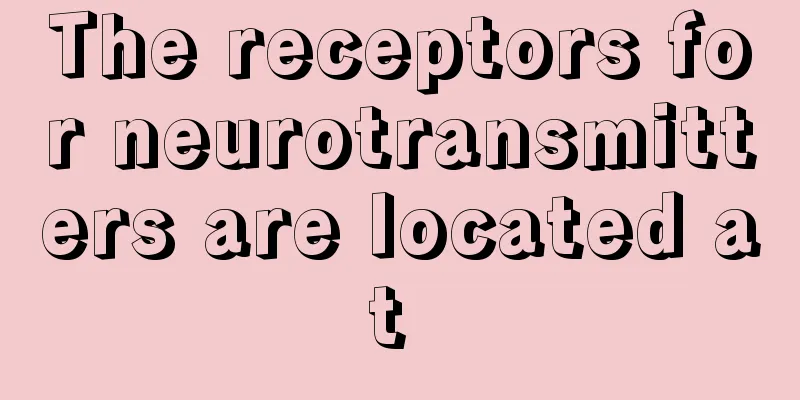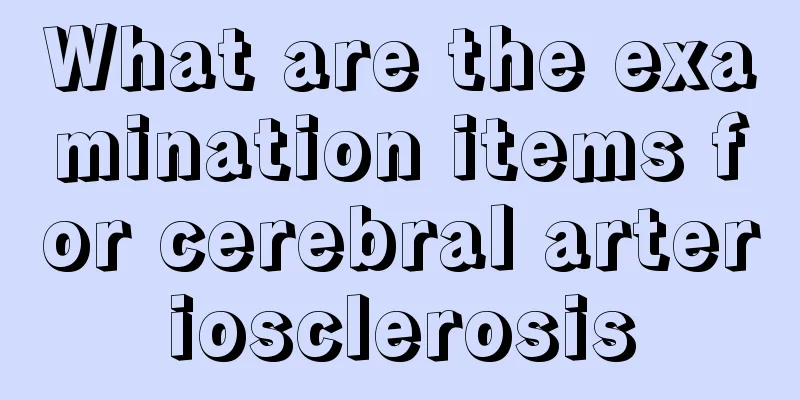The receptors for neurotransmitters are located at

|
Neurotransmitter is a substance located in neurons and is also a substance that is of great significance to the human body's sensory nerves. Neurotransmitter receptors also have a certain influence on neurotransmitters. This substance is generally located outside the cell, across the membrane or in the cytoplasm. The neurotransmitter receptors in different locations have different functions. The neurotransmitter receptors will be introduced in detail below! 1. What are neurotransmitter receptors? Receptors coupled to second messengers are usually monomeric structures with three components: the extracellular part, which is the site of glycosylation; the transmembrane part, which is bag-shaped and generally believed to be the site where neurotransmitters act; and the intracytoplasmic part, which is where G proteins bind or phosphorylate to regulate the receptors. Ion channel receptors are all complex structures. In certain instances, activation of the receptor causes a change in ion channel permeability. In other cases, activation of second messengers causes changes in channel conductance. 2. Life Cycle In the central nervous system (CNS), the most important mode of synaptic transmission is neurochemical transmission. After being released from the presynaptic membrane, neurotransmitters immediately bind to the corresponding postsynaptic membrane receptors, generating a synaptic depolarization potential or hyperpolarization potential, resulting in an increase or decrease in the excitability of the postsynaptic nerve. The action of neurotransmitters can be terminated through two pathways: one is recycling inhibition, that is, the excess neurotransmitters in the synaptic cleft are recycled to the presynaptic neuron through the action of presynaptic carriers and stored in vesicles; the other pathway is enzymatic hydrolysis. Taking dopamine (DA) as an example, it is metabolized and inactivated through the action of monoamine oxidase (MAO) located in the mitochondria and catecholamine o-methyltransferase (COMT) located in the cytoplasm. 3. Standards Neurotransmitters must meet the following criteria: ① Synthesized within neurons. ②. Amount stored in synaptic neurons and released at a certain concentration (with significant physiological effects) when polarized. ③. When used as a drug, the exogenous molecule resembles endogenous neurotransmitters. ④. The mechanism of neurons or synaptic clefts is the clearance or inactivation of neurotransmitters. If all criteria are not met, it is called a "proposed neurotransmitter". |
<<: What shampoo to use for oily and itchy hair
>>: What is the Difference Between Tympanic Drum and Eardrum?
Recommend
What are the properties of the soul-returning herbs
The herbal properties of Resurrection Grass are a...
Does sea cucumber cause heatiness? If you often eat sea cucumbers, you must know
As we all know, sea cucumber is a tonic food and ...
Will my teeth fall out when I get older if I wear braces?
Nowadays, many parents are worried that they don’...
What to do if the iron pan is rusted
Many people like to cook with iron pots. Using ir...
Is there any relationship between rectal cancer and menstruation in women
There is generally no relationship between rectal...
How to quickly remove the odor in the room
In our daily life, we always hope that the air at...
Symptoms in patients with early-stage bone cancer are usually more severe at night
A hard lump can be felt on the surface of the bon...
What are the effects of washing hair with salt water
People use salt when cooking. Salt has many uses....
Parotid lymphoepithelioma
Parotid lymphoepithelioma is a relatively rare ty...
What are the common causes of lung cancer?
The cause of lung cancer is still not completely ...
How is glioma diagnosed
Glioma is a little-known disease. Although most o...
Can I do an ultrasound at 7 weeks of pregnancy?
When a woman is in the 7th week of pregnancy, it ...
What ointment to use for eye dermatitis
When eye dermatitis occurs, you should rest your ...
Disadvantages of single-leg squat
In fact, doing some squats regularly can not only...
How many courses of chemotherapy are needed after colon cancer surgery?
Normally, patients with colon cancer need 4-6 cyc...









